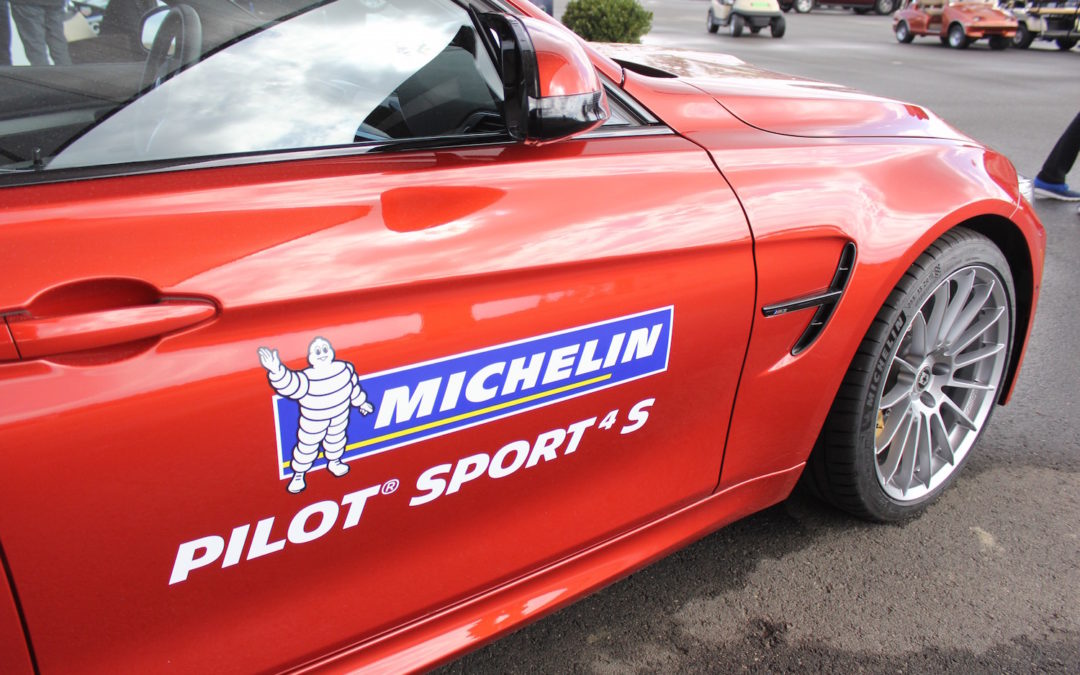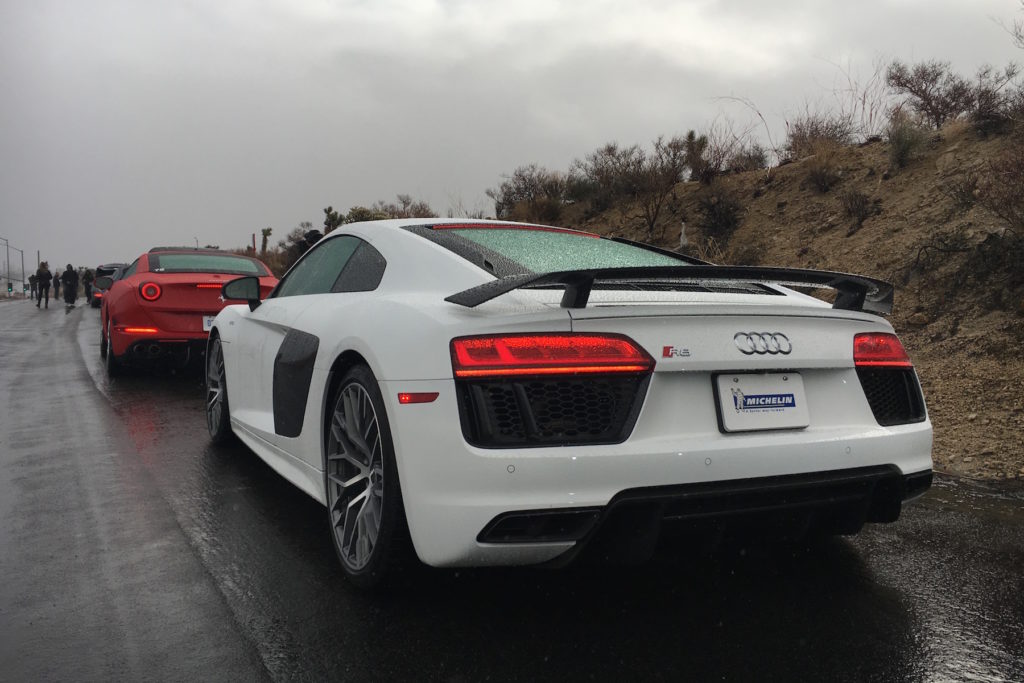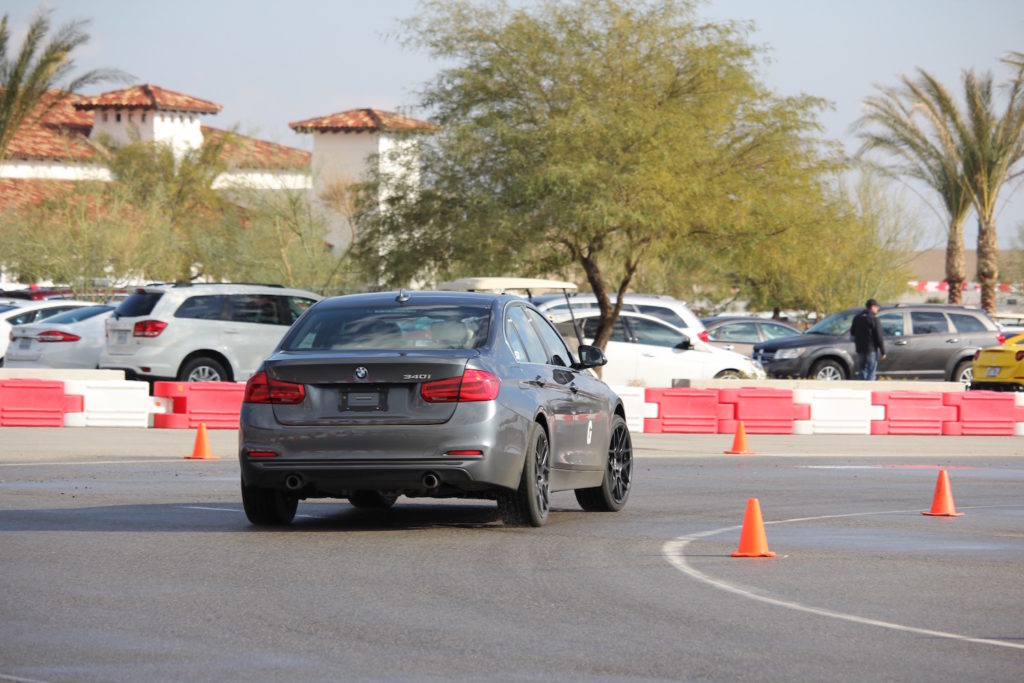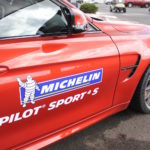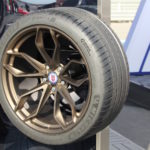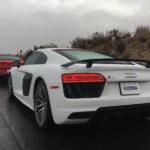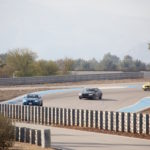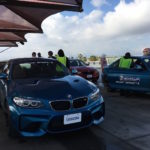How does a tire manufacturer introduce the successor to one of the most celebrated products of the last six years? Evidently, with ranks of supercars, an autocross course, and giddy social media influencers. Such was the atmosphere of Michelin’s Pilot Experience, a two-day affair that previewed the company’s all-new ultra high performance (UHP) rubber: the Pilot Sport 4 S (PS4S).
Palm Springs, CA is known for its breathtaking scenery, but Michelin was far more interested in the region’s private racetrack – Thermal Club – and Joshua Tree National Park’s curvy roads. Here, Digital Trends experienced the new tire in both wet and dry conditions, at low and high speeds, and on rough and smooth pavement.
With competitors closing in on Pilot Super Sport (PSS) performance benchmarks, Michelin hopes its PS4S will vault the brand further ahead of the UHP segment than ever before.
Performance tire breakdown
Before diving into how the PS4S stacks up, let’s review each performance tire segment with examples from Michelin’s lineup.
The tire world is infinitely complex, but to keep things simple, consider passenger tires to fit in three buckets: winter, summer, and all-season. For our purposes, we’ll focus the conversation on all-season and summer tires. As their names suggest, each tire is tailored to the climate conditions. Summer tires operate best at higher temperatures and are less prepared to handle wet or snowy roads. All-season tires, by comparison, have a wider range of operating temperatures and are made to handle better in the wet. Because of this focus, all-season tires don’t have the same braking and handling thresholds as summer tires in warm, dry conditions.
With that out of the way, let’s bring the magnifying glass over the summer tire category, in which Michelin’s Pilot Sport 4 S tire competes. This segment can be split into numerous sub-sections, but we’ll trim it to three for now: touring, UHP, and extreme/track tires.
Touring summer tires are a relatively new segment, and focus on blending ride quality with strong traction. High-end luxury cars most commonly use this type of tire to reduce road noise while providing sufficient grip for their high-output engines. Michelin’s Pilot Primacy tires fit within this sector.
Related: Pirelli’s New P Zero Tire Makes Good Cars Great
Ultra high performance summer tires are priced similarly to touring summer tires, but are engineered for optimal dry handling potential (at the expense of ride compliance and noise). Many sports cars roll off the production line with these tires to fulfill their lofty performance capabilities. Michelin will fit its Pilot Sport 4 S tires on certain Ferrari, Porsche, Ford, Corvette, BMW, and Mercedes-Benz products.
Finally, extreme performance summer tires exist for drivers who want maximum grip while driving on track. To achieve this goal, tire manufacturers create tread patterns with a narrow focus on dry conditions (meaning you really don’t want to cruising about with this type of tire on a rainy day). These tires are also ineffective below a high operating temperature. In this category, Michelin’s Pilot Sport Cup 2 tires are some of the best street-legal tires you can buy.
Super Sport v. Sport 4 S
Pilot Super Sport tires have become a favorite of sports car enthusiasts for their durability, grip, and versatility in both daily driving and track driving situations. To maintain its segment dominance, Michelin engineered its PS4S tires to perform slightly better than its PSS tires in dry conditions and dramatically better in colder/wetter conditions.
To improve dry handling and braking, Michelin integrated some of its Sport Cup 2 technology within the PS4S. A new hybrid belt is used to control tire growth at high speeds. Kevlar and nylon are woven into a durable composite that works with a variable contact patch to ensure optimum response and traction. Dry braking from 62 mph to 0 has been cut by 3.54 feet compared to the PSS for a total distance of 110.43 ft. On Michelin’s 1.6-mile test track, the PS4S also dropped 0.16 seconds from the PSS’s time. While that may not sound like much, endurance races (both professional and not) can stand to cut several seconds over the course of an event.
Michelin carefully blended softer and harder compounds within the PS4S tire’s construction to cover a range of driving conditions. In the company’s words, “it’s not as cut and dry as saying a softer compound has more grip. Under moderate to high temperatures, a softer compound has more traction, but if track temperatures rise past a certain point, the softer compound actually loses grip.”
To manage wet conditions, Michelin applied a multi-tread compound construction with two elastomers and increased the silica on the PS4S tire’s inside shoulder (just as it did for Le Mans). As a result, the PS4S stops shorter in the wet than the PS4S and has greater stability when cornering.
PS4S v. the world
To evaluate Michelin’s new UHP tire side-by-side with leading competitors, the manufacturer staged an autocross course at Palm Spring’s private raceway, Thermal Club. Here, I was able to test full-force braking distances, tight cornering angles, and – thanks to a surprising downpour – wet handling.
On hand were rear-wheel drive BMW 340i sport sedans with Pirelli P Zero, Bridgestone Potenza, Continental ContiSport, Goodyear Eagle F1, and Michelin Pilot Sport 4 S rubber. First up was the Bimmer with Bridgestone’s. Though I lacked a reference point, the Potenza tires felt overwhelmed by quick changes in direction. Instead of transferring load and applying power smoothly, the tires broke free under the slightest bit of aggression. Though I’d be lying if I said it wasn’t fun to slide the car around the course, it was certainly not the quickest lap. It was a similar story with the ContiSports, albeit with a more abbreviated braking distance.
From there, I transitioned to one of the bigger players in the UHP segment: Goodyear’s Eagle F1. Of all the tires I tested, Goodyear’s felt the most stable in wet conditions. However, once the surface dried and the 340i picked up the pace, the Eagle F1 tire lost its edge. Michelin’s closest segment rival was up next: Pirelli’s P Zero.
Having just sampled Pirelli’s latest P Zero rubber a few weeks prior, I expected great things from the Italian tire maker. Immediately, it was clear the P Zeros were on another level. With only a bit of damp track, traction and feedback were tremendous. Truthfully, after two laps, I did not expect Michelin’s tire to outperform the P Zero.
At long last, I slid into a BMW with Pilot Sport 4 S shoes and set off. Like the P Zero, Michelin’s PS4S felt instantly like an elite class of tire next to Goodyear, Bridgestone, and Continental’s offerings. My first few laps were on a dry track, where the PS4S clung to the road like a discarded piece of gum. Responsiveness was right on pace with the Pirelli’s, but there was something more. Where the P Zero tires felt unstable under full load, the PS4S tires felt rock solid. It was as if the P Zero’s sidewall was contorting under intense pressure while the PS4S never lost its shape. This seat-of-the-pants sensation gave me more confidence to push the PS4S than the P Zero, which ultimately made the difference in lap times.
Even when Michelin sprayed down a section of the course, it was the same story. Though the PS4S felt just a bit more skittish than the Goodyear tires in the wet, it more than proved itself the best all-around UHP tire.
A higher standard
In full disclosure, I expected Michelin’s new tire to be good. Not only has the Pilot Super Sport been the gold-standard UHP tire for years, it’s how I’ve always shod my E36 BMW M3. Fortunately, I needn’t be your only authority on the matter. Michelin used an independent testing agent to pit the Pilot Sport 4 S against every key rival in dry braking, wet braking, and dry handling evaluations. Guess who came out on top in every test?
Need another reason to choose the Sport 4 S? Michelin added a patch to the exterior sidewall of every tire that feels like velvet. Now that’s innovation.

